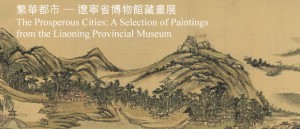因著難以言喻的機緣,數年前皈依成為佛教徒。多年來一直很喜歡心經,沒有特別的理由,反正就是喜歡。很久以前就想寫一篇心經簡介,無奈自己水平不足,遲遲未能下筆。最近在香港大學的美術博物館,看到一本心經簡介的小冊子,寫得真的很好。「獨樂樂不如與眾樂樂」,決定在此和大家分享。下述中英文專業資料轉載自香港大學美術博物館的《心經簡介》,以及楊春棠先生的《心經簡譯》。
With good timing, I became a Buddhist some years ago. I enjoy reading the Buddhist classics “Heart Sutra” and always wish to write an article to share with the public. However, because of my limited knowledge, I am unable to complete it until today. Being inspired by the booklet produced by the University Museum and Art Gallery of the University of Hong Kong, I am happy to introduce this famous Buddhist classics “Heart Sutra” to all of you. The following information is published by University Museum and Art Gallery, the University of Hong Kong, and the interpretation is written by Mr. Yeung Chun Tong.
「般若波羅蜜多心經,亦稱般若心經或心經,全文共二百六十字,乃字數最少,但最廣為人知的大乘佛經。全文概述「空」的理念,亦即佛陀教義核心所在,被視為佛陀智慧的昇華,通達「心空無物」,證悟佛教真實自在的境界。
自三世紀以來,心經共有二十一種漢文譯本,鳩摩羅什和玄奘大師所譯之版本舉世流通。心經在中國、韓國和日本廣為流傳。千載以來,東亞僧侶及普羅信眾不斷傳誦。歷來的心經註解約有一百多種,現存約八十種。
初次閱讀心經,可能感到非常困難,無法瞭解箇中意義,因其理念非比尋常。唯有開放自己,內省沈思,方可領悟蘊涵的宇宙奧祕及生命真理。」
Introduction to the “Heart Sutra”:
“The Heart Sutra, also known as the Heart of Prajna-Paramita Sultra, with 260 words is the shortest and the most popular Mahayana sutra. It contains a concise articulation of the meaning of emptiness (Sunata), which is at the heart of the Buddha’s teachings. It is therefore regarded as the summation of the Buddha’s wisdom. It explains the teaching of non-attachment.
Since the third century, this sutra has been translated into Chinese 21 times. By far the most popular of these are the renditions by the monks Kumarajiva 鳩摩羅什 and Xuanzang 玄奘. Very popular in China, Korea and Japan, these versions have been chanted daily throughout East Asia by clerics and laypeople for over a thousand years. Among 100 different types of commentaries on the sutra, 80 are still in existence.
If you have not read the “Heart Sutra” before, you may find its unfamiliar way of thinking difficult to comprehend. If one is open-minded, and contemplates carefully its message, the “Heart Sutra” will reveal the entire secret of the truth of the universe and life and reward all those who seek to understand it.”
「觀自在菩薩 行深般若波羅蜜多時 照見五蘊皆空 度一切苦厄 舍利子 色不異空 空不異色 色即是空 空即是色 受想行識 亦復如是 舍利子 是諸法空相 不生不滅 不垢不淨 不增不減 是故 空中無色 無受想行識 無眼耳鼻舌身意 無色聲香味觸法 無眼界 乃至無意識界 無無明 亦無無明盡 乃至無老死 亦無老死盡 無苦集滅道 無智亦無得 以無所得故 菩提薩埵 依般若波羅蜜多故 心無罣礙 無罣礙故 無有恐怖 遠離顛倒夢想 究竟涅盤 三世諸佛 依般若波羅蜜多故 得阿耨多羅三藐三菩提 故知般若波羅蜜多是大神咒 是大明咒 是無上咒 是無等等咒 能除一切苦 真實不虛 故說般若波羅蜜多咒 即說咒曰 揭諦揭諦 波羅揭諦 波羅僧揭諦 菩提薩婆訶」
「觀自在菩薩指出,當修行至極高智慧,而到達彼岸(自在的境界),便知道身體和精神是變化無常的,凡事毋需執著,就能超脫一切苦惱和困厄。
舍利子提示,物質(色)不斷地變化,而變化(空)離不開物質本體。物質和變化兩者是分不開的。而在精神方面(受、想、行、識),變化同樣地永無休止。
一切事物(諸法)都有互相對立的現象,因此不須固執生存或滅亡,汙垢或潔淨,增加或減少。精神的感受,感官的作用(色、聲、香、味、觸、法),以至產生的知識概念均無獨存的一邊,它們互相依存而變化。
人生的歷程就是流轉不息,起結無定。做事修行不可執著四聖諦(苦、集、滅、道),即沒有獨存的問題,和獨存的解決之道,沒有既定的智慧和成果,一切對象都不會獨立存在。
若依智慧而到彼岸,心中便沒有任何牽掛。由於沒有牽掛,就不會有恐懼,而能拋開煩惱,超脫生死,達到清淨自在的境界。
所有佛(過去、現在、未來)是這樣得到圓滿的覺悟。因此種關係,依智慧到彼岸的道理是神通廣大的、正大光明的、無以上之的。它是無可等同的咒語,能去除一切苦厄,切實而不虛假。
English translation of the “Heart Sutra”, published by the University Museum and Art Gallery:
“Bodhisattva Avalokitesvara (觀自在菩薩):when practising the perfection of wisdom (Prajna-paramita)(行深般若波羅蜜多時), one clearly sees that the five skandhas (senses) are all empty (照見五蘊皆空), and thus he attains deliverance from all sufferings (度一切苦厄).
Sariputra: matter is not different from emptiness ( 舍利子,色不異空), and emptiness is not different from matter (空不異色). Matter is then emptiness and emptiness is then matter (色即是空,空即是色). So too are sensation, recognition, volition and consciousness (受想行識,亦復如是).
Sariputra: the empty character of all dharmas is that (舍利子,是諸法空相) it neither arises nor ceases (不生不滅), it is neither pure nor impure (不垢不淨), and neither increases nor decreases (不增不減).
For this reason, in emptiness there is no matter (是故空中無色), no sensation, recognition, volition or consciousness (無受想行識), no eye, ear, nose, tongue, body, or mind (無眼耳鼻舌身意), no sight, sound, scent, taste, tangibles, or dharma (無色聲香味觸法), no limit to what the eye beholds and no limit mental consciousness (無眼界,乃至無意識界).
There is no ignorance nor the ending of ignorance (無無明,亦無無明盡). There is no age and death, nor the end of old age and death (乃至無老死,亦無老死盡), no ending of suffering, and no path to the extinction of suffering (無苦集滅道). There is no wisdom and also no attainment (無智亦無得). Because there is nothing obtainable (以無所得故), Bodhisattvas through their reliance on Prajna-paramita (菩提薩埵,依般若波羅蜜多故), have no attachment and hindrance in their minds (心無罣礙). Because there is no more attachment and hindrance (無罣礙故), there is nothing to fear (無有恐怖). Departure from inverted and illusory ideas (遠離顛倒夢想) leads ultimately to the Final Nirvana (究竟涅盤).
Because the Buddhas of the three realms (past, present and future) all rely on Prajna-paramita (三世諸佛,依般若波羅蜜多故), they attain Annutara-samyak-sambodhi (得阿耨多羅三藐三菩提).
Therefore, you should realize that Prajna-paramita (故知般若波羅蜜多) is the great wondrous mantra (是大神咒), the great radiant mantra (是大明咒), the unsurpassed mantra (是無上咒), and the unequalled mantra (是無等等咒). It can eradicate all sufferings (能除一切苦) because it is genuine and not false (真實不虛). Therefore, utter the Prajna-paramita mantra (故說般若波羅蜜多咒).
Chant (即說咒曰): Gate Gate Paragate Parasmagate Bodhisvaha (揭諦揭諦 波羅揭諦 波羅僧揭諦 菩提薩婆訶)!” (Yeung, 2011)
Please click on the hyperlink for another great interpretation of the “Heart Sutra” by Mr. George Boeree, Ph.D. — “Heart Sultra”
Reference:
- Yeung, C. T. (2011) Heart Sutra. HK: The University of Hong Kong







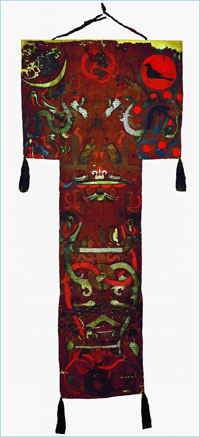
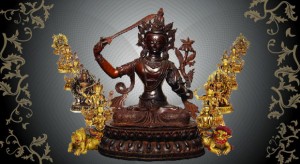 參觀近日香港大會堂展覽廳的
參觀近日香港大會堂展覽廳的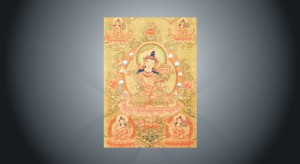 While watching the 108 pieces of
While watching the 108 pieces of 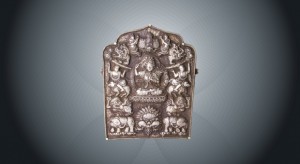 The exclusive artifacts on display –
The exclusive artifacts on display –  本月二十五日至十一月二十二日香港藝術館舉行的“繁華都市 – 遼寧省博物館 藏畫展”,令十五件遼寧省博物館裡頗具代表性的明朝和清朝繪畫一一呈現香港民眾面前。此批畫作呈現江南地區的都市生活和社會風貌,展品以手卷居多。細緻的場景,令人置身其中,感受中國古代社會的生活風貌。
本月二十五日至十一月二十二日香港藝術館舉行的“繁華都市 – 遼寧省博物館 藏畫展”,令十五件遼寧省博物館裡頗具代表性的明朝和清朝繪畫一一呈現香港民眾面前。此批畫作呈現江南地區的都市生活和社會風貌,展品以手卷居多。細緻的場景,令人置身其中,感受中國古代社會的生活風貌。